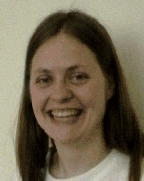

| Room: | B147 |
|---|---|
| Phone: | 020-4447127 |
| Email: | fleur@bio.vu.nl |
| Project: | Individual-based population dynamics |
| Publications: |
Biological populations consist of discrete individuals with a unique physiological state. In addition, random variation in, e.g. individual growth, occurs between identical individuals. This inherent discreteness and the consequent sources of stochasticity are often neglected, because the long-term behavior of populations is more suitably studied with continuous descriptions.
The aim is to study this discreteness-continuity dichotomy using massively parallel machines, since both approaches involve large-scale computation. Initially, the study will focus on populations in a homogeneous environment. Later on spatial effects will be taken into account.
The theory of Dynamic Energy Budget models developed by Kooijman will be used to describe the internal dynamics for each individual, that is, the energy uptake and use for growth, maintenance and reproduction. This model together with models for the interaction of the individuals with the environment, e.g. food availability, harvesting, immigration and emigration, form the basis for the structured population dynamic model.
Two particular issues will be studied:
Model formulations based on density measures neglect the inherent stochastic nature of e.g. birth and death, approximating these processes by representing them with their expected values. The dynamic behaviour of these models will deviate significantly from completely stochastic descriptions for small populations. One of the first questions to resolve is to what level the `law-of-large-numbers' is safe to exploit.
Individual-based modeling of population dynamics makes it possible to take the variation between individuals, and selection into account. Apart from the intrinsically stochastic reproduction and mortality events, individual organisms develop in a roughly deterministic way throughout their lifetime. This behaviour is partly fixed by values of parameters which can differ a little for different individuals making up the population. The consequences of this parameter variation among individuals on the population dynamics will be studied.
By coupling parameter values of daughters to those of their mothers via an inheritance mechanism, it is possible to simulate evolution-processes for selection via competition already incorporated in the population dynamics.